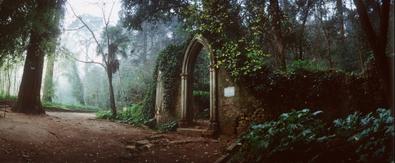Located in the central region of Portugal over a hill by the river Mondego, with a population of around 100,000, Coimbra is one of the most important urban centers of Portugal. The city contains important archeological remains of structures dating from the time when it was the Roman town of Aeminium, as well as from the period when it served as the capital of Portugal (from 1139 to about 1260).
 |  |
| © Turismo Centro de Portugal |
The University of Coimbra, which was founded in 1290, is one of the world’s oldest universities. Due to its monumental buildings and history, the University attracts visitors from around the world, making the city an important touristic destination. Among the most visited place are the Pátio das Escolas, the Biblioteca Joanina (a baroque library built between 1717 and 1728, housing books from the 16th to the 18th century), the Sala dos Capelos (The Grand Hall), the University’s Chapel and the Botanic Garden.
 |  |  |
| © UC-DIIC |
Introductions to the city: Turismo de Coimbra website; Wikipedia
Places to visit in the city: Turismo de Coimbra website
 |  |  |  |
| © Turismo Centro de Portugal |
Useful information for tourists: Turismo de Coimbra website
 |  |  |
| © Turismo de Coimbra |
Information about the Coimbra and Center of Portugal regions: Turismo Centro de Portugal website
Weather: In September, the weather in Coimbra is usually quite warm, with top temperatures ranging from 20ºC to 30ºC or higher. Occasional rain may occur. For weather forecasts please see: 5-days weather forecast and 10-days weather forecast.
Language: The language spoken in Portugal is Portuguese, but many people, in particular young people, are able to communicate in English.
Currency: Portugal has adopted the Euro (EUR or €).
Tourist information: Visit Portugal website and Wikitravel
Practical information: Visit Portugal website
General information about the country: Wikipedia
Please note: 16ICHSCR is not responsible for the content of external websites.